The worlds of S. Craig Zahler are inhabited by the likes of wraiths, jackals, cannibal troglodytes, and hardboiled cops. Knights-errant traverse metaphorical and physical hellscapes, where violence only begets more violence. And under an all-encompassing cloud of dread, the universe churns toward its inescapable and apocalyptic conclusion, as punishment and death are doled out disproportionately, without any regard for morality or innocence.
Bottom line: Zahler’s pulp sensibilities come with a dark philosophical bent.
Therefore, it should come as no surprise that he’d eventually take a stab at creating a graphic novel inspired by pre-code horror comics. And his new book, Forbidden Surgeries of the Hideous Dr. Divinus, which he writes and illustrates, feels both at home in the Zahler oeuvre overall and on the shelf next to Tales from the Crypt and Haunt of Horror.
Those familiar with his novels (Wraiths of the Broken Land, Mean Business on North Ganson Street) and his films (BONE TOMAHAWK, DRAGGED ACROSS CONCRETE) will immediately recognize the familiar mechanics of a Zahler outing: witty dialogue, outrageous violence, and characters that look and act like Fred Melamed. However, as dark as the material gets (and this shit gets wild), there is a sense of fun absent from other Zahler works, as the writer delights himself with playing in the sandbox of the medium.
The story follows mobster Tommy Driscoll after he thwarts a kidnapping attempt on his comatose sister and uncovers more than he bargains for: a vast, underground conspiracy of missing homeless people, men with strange abilities, and, yes, forbidden surgeries. Zahler’s illustrations are simple and in black and white, but he utilizes the contrasts and shadows similar to a Val Lewton horror film — creating a palette of noir and German expressionism. Hence, the horror feels classic while the irreverent and shocking storyline tickles that EC-loving funny bone inside of you.
Luckily, I had an opportunity to discuss pre-Code horror with Zahler, touching on his inspirations for the new book, as well as metal and all things Fred Melamed.
(The interview below has been slightly edited for clarity and brevity.)
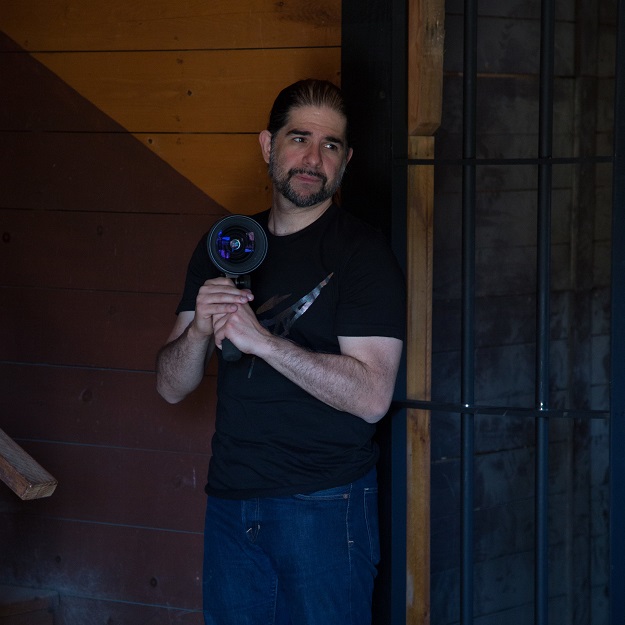
MR: I don’t want to blow smoke up your ass, but I did have DRAGGED ACROSS CONCRETE as my number one film last year. So you’re talking to a fan.
Zahler: I’m glad to hear it. I’m glad you enjoyed it.
MR: I think years from now, when people look back on your filmography, they’ll see that as the unsung hero.
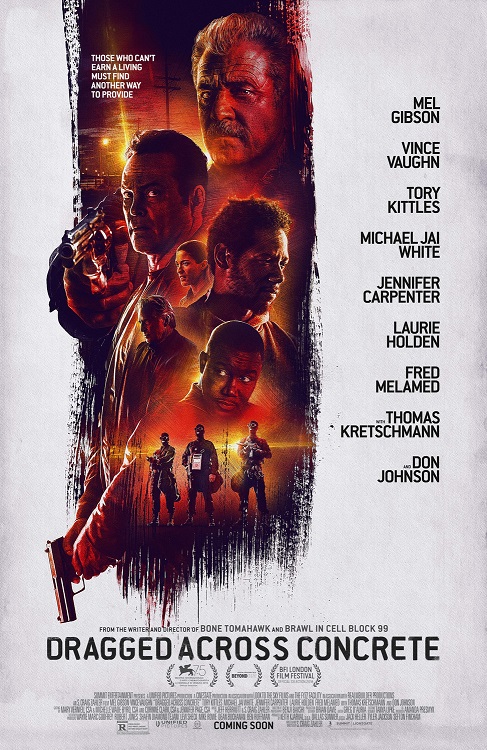
Zahler: You know, being unsung is fine. I just like getting to make projects that I believe in and I’m proud of. People can discover them at whatever rate they want. I think, partially, as a result of the very limited push that all the movies have gotten, they sort of remain active in a different way. It’s pretty rare for more than a couple days to go by and for me not to see an article or have someone send me a piece on one of the movies, because they didn’t explode on the scene with the gigantic studio push behind it. They are discovered word of mouth. And although I certainly would like for more people to have seen all three of the pictures, it’s cool that they remain alive in this way where people will continue to discover them all the time. When the shutdown happened, there was a flurry of articles about things you might have missed on streaming and the hidden gems on Amazon Prime and all of that sort of stuff. Again and again, two or three of the movies would come up on the list. So there was renewed interest at that point when everyone knew they were gonna be confined in their home.
MR: I’m definitely guilty of writing one of those articles. But I guess we’re here to talk about the new graphic novel, which, of course I loved.
Zahler: Cool! Nice to hear, thank you.
MR: One of the reasons why was, like, right off the bat, it just had that same feeling and charm and fun as the EC Comics. And I can’t believe I’m asking this out loud, but are you a fan of those?
Zahler: I could go in the room next door to where I am, and I have a piece of original art from The Haunt of Fear drawn by Graham Ingles.
MR: Oh, man…
Zahler: So that probably answers your question. I could take different points of my life. I read EC Comics when I was a kid. I had pulls at the comic book store. I’ve been a serious comic book reader since SPIDER-MAN #254, two issues after the Black Suit premiered, and that G.I. Joe “Silent Issue.” So I think that’s 1984. I’ve been reading comics since then. I mean, I have a lot of interests, so it would come in waves. But I read EC Comics when I was little, and then when I got into comic collecting again (more fully as an adult), which was really about 20 years ago when I really returned to the hobby in full force. I read occasional things along the way, like Sin City and League of Extraordinary Gentlemen and then would return to some childhood favorite. But when the interest was renewed, and I got back in a very serious way with reading modern stuff and reading comic strips from the ’20s, ’30s, ’40s, ’50s, ’60s — really like all the decades that the medium has been around for — it was EC Comics that reignited the fire. Like, I was just struck: “I need to read EC Comics.” And that reignited the fire in around the year 2000-’01. Then, as I was reading more prose fiction and fewer comics in, maybe, 2011-’12, I was, again, struck with that dope fiend urge, like “I gotta read EC Comics!” And I started reading all those again. That put me on the recent jag, which has been uninterrupted for years, of exploring EC Comics, other pre-Code horror comics, things like Chris Ware. I have shelves and shelves of Frank Miller and Jack Kirby, and shelves and shelves of the [Donald] Duck artists, Carl Barks and Don Rosa. So it’s EC Comics that’s ignited that interest multiple times in my life. And I have part of it framed in the in the room right next to the one in which I’m currently standing at my drawing board. So big time. Do you have favorite creators for EC Comics?
MR: Well, I don’t have that cool ass original art, but I do have most of those ’90s reissues. It was definitely an influence on me growing up because being slightly younger than you, my first exposure was CREEPSHOW, which was obviously an homage to that stuff. And then, of course, Tales from the Crypt came out. And so I mean, just that story structure as an artist and writer myself — you know, the ironic comeuppance. It’s horrible people doing horrible things and getting punished for it. It was definitely a staple of my pulp education. I assume it’s the same for you.
Zahler: Yeah, it’s big. The other thing that happened when I returned to EC Comics this recent time — it struck me that, you know what? There are probably a lot of good horror comics from that era that just aren’t EC. And there are. You gotta dig, and they’re uneven. I mean, I think that’s the biggest problem when you start reading Weird Mysteries or Black Cat or Tomb of Terror or This Magazine Is Haunted or Forbidden World, et cetera, et cetera. I really read thousands and thousands of pages of the other pre-Code horror books. The consistency is all over the place. I can recommend a title, and you may get in an issue that’s actually comparable to an EC comic. Or you may read one that’s mostly manure.
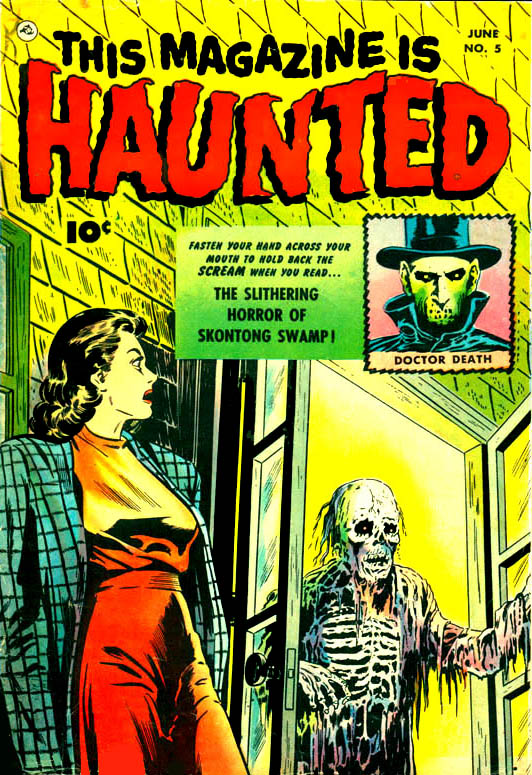
So I think there’s one comic — This Magazine Is Haunted, the pre-Code stuff before [Steve] Ditko was there — if you read maybe the first 12, 13, 14 issues of that, it is probably the most consistent, qualitatively. But there’s other stuff like that, and one of the things that’s actually better about that comic is it isn’t as formulaic. The stories aren’t always six, seven, or eight pages with an ironic twist. Sometimes you’ll read a four-page story or a 12- or 13- or 14-page story that doesn’t have the ironic twist. And most of those ironic twists make the stories very moral. You have a bunch of people doing terrible things, and then bad shit happens to them, which is a way of saying the universe corrects things. They don’t get away with it, which is a way to tell a horror story. But it’s not necessarily a horrific thing that if you do bad things, you’re going to get punished. That’s not a horror approach, it’s a moral approach. When you read This Magazine Is Haunted, sometimes there’s a bunch of horrible shit that happens, THE END.
Clearly, you’ve read my comic and you’ve seen my movies. I’m not putting out there the idea that the universe course corrects and makes everything moral. Those stories, my novels, the comic book, and my movies are character driven. Sometimes it works out for some of the people, but it certainly doesn’t work out for all of them. And I’m not putting forward the idea that there’s a higher power or morality controlling all of this. But the EC Comics are wonderful. I mean, the horror ones are great. The science fiction ones — a lot of those are horror stories as well — those are great. Like Weird Science, Weird Fantasy, Weird Science-Fantasy (when they joined together). All that stuff I enjoy. The war comics look great, but those get a bit heavy handed and preachy for my taste in terms of “Okay, we get it. No one thinks war is amazing.” But if the point of every story is to tell us war is bad, that gets monotonous pretty quick. I would rather see a story where that is based around the character, and you can watch someone do some terrible things or watch someone be heroic, as opposed to being told war is terrible. Which, I think people know. We checked the box on understanding that this is bad, so you don’t necessarily need to do stories just to illustrate that point. But, hey, that same philosophy is how you get a lot of Oscar contender movies.
MR: [laughs] Yeah, actually, speaking of your novels, Wraiths of the Broken Land: one of the scariest parts for me in that whole book is with the randomness of how each character meets their destiny. It’s almost like Stephen Crane’s “The Open Boat.” You just have people floating out there, and it doesn’t matter who you are, how good or bad you are. You’re gonna get dealt a hand. And whatever that hand is, it may not be fair.
Zahler: [laughs] That seems like the blurb I should put on my new book: “You’re gonna get dealt a hand.” And certainly, I’m glad you enjoyed that thing to whatever extent you did. I’m pretty proud of that book.
MR: I think it’s a beautiful book. I confess I haven’t read any of the other books, but I’ve read that one, and it makes me want to read the others.
Zahler: If you like that one, you’ll enjoy the others. The science fiction book [Corpus Chrome, Inc.] and Hug Chickenpenny are pretty different, but if you like DRAGGED ACROSS CONCRETE and Wraiths of the Broken Land, you’ll definitely like Congregation of Jackals and Mean Business on North Ganson Street. There’s very little chance that those wouldn’t work for you. The other two are different. The science fiction one is completely different. It’s far less intense, and there’s just a lot more introspection and wondering at a lot of faucets of society, and is a very different experience. There’s certainly people who would prefer that book over all the others and people who are like, “Wow, this isn’t a book loaded with intense violence and snappy dialogue.” So that one is pretty different, as is Hug Chickenpenny.
MR: Back to the new book. I have one very specific, weird question. So the Sidney Baumgarten character… That’s Fred Melamed, right?
Zahler: [laughs] So the short answer is I will not deny what you have just said. The longer answer is, I wrote characters that are like the Fred Melamed characters in my movies before I knew who Fred Melamed was. He has this grandiloquent way of speaking, this terrific voice, and really warm presence. And prior to seeing A SERIOUS MAN, in which he’s incredible, I had written a lot of characters in pieces of mine that were sort of the type that I now give to him. And, you know, he’s been in all three of my movies, and the movies I’m looking at doing in the future, he has a role in every single one of them. So yes, I cannot deny what you said. [Baumgarten] is that kind of character, that were I to make that into a movie, there’s no thought as to who would be offered that role.
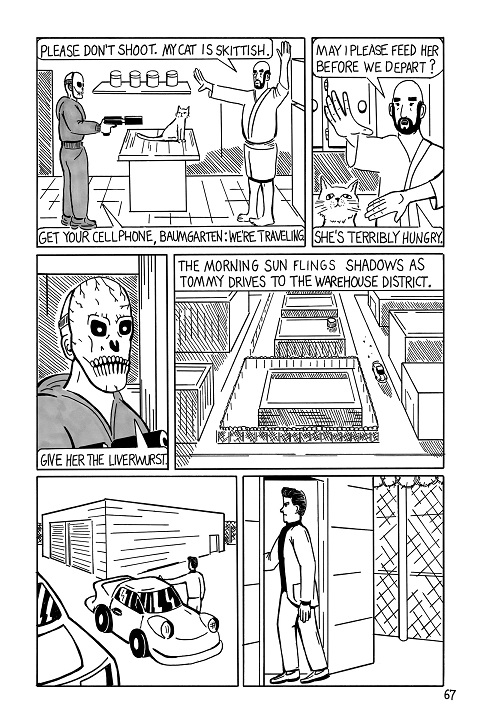
I’m just a huge fan of that guy. I could say there’s a general type that that character is — the Fred Melamed type. But I didn’t, like, look at him to draw him accurately or anything like that. But yes, you are not the only person to comment, “Oh, there’s even a Fred Melamed role in your comic!” Yes, that role would go to him. And, yes, it’s funny, because in a way, he’s kind of my muse. I mean, even in one of the movies I’m taking forward now, there’s a role, a good-sized role when I wrote it originally. But when I knew this was gonna be the Fred Melamed role, I beast it up some. I made the character more grandiloquence and even more pretentious and gave them even more to do, because it’s just so much fun. I mean, the joy of working with him on set and then also playing around with the footage in the editing room with my editor is terrific. But well-observed question.
MR: Hey, it’s my favorite part of the book. I mean, I won’t give away any of the context for anyone who’ll be reading this later, because I don’t want to spoil anything. But the whole interaction between him and Tommy Driscoll is like one of my favorite things from this year.
Zahler: Oh, cool! Thanks!
MR: What was it about this story that spoke to you about doing this as a graphic novel? Or were you like, I want to do a graphic novel, and I need to think of a story?
Zahler: Well, what happened was, again, I was in that renewed interest of reading EC Comics and pre-Code horror. And I actually remember the moment. I was in post-production on DRAGGED ACROSS CONCRETE, and I went to Las Vegas to record The O’Jays, the songs that I wrote with my songwriting partner, Jeff Herriott, for the songs for DRAGGED ACROSS CONCRETE. And going out there, I was reading all these old comics, and I remember I was waiting for my songwriting partner to show up. I was pretty deep in something called The Claw from Daredevil comics. Not the Marvel Daredevil. There was a Daredevil comic character from the ’40s, but with the two-colored suit. It has nothing to do with the Marvel character, but in that comic, there was a Claw comic. That was really a good kind of pre-Code hero/horror combo. And yeah, I thought I should just do one of these.
The DRAGGED ACROSS CONCRETE shooting experience was very, very rough. All of the movie experiences are rough, in terms of just pulling it all together with the quality of crew I can afford. And they’re always ambitious, beyond the budget of what we have. And so this experience is a really, really tough. A movie experience of being on set — most of that isn’t creative. Most of that is managerial. Writing something is almost entirely creative, and drawing a comic is also almost entirely creative. I’m standing at my drawing board now, trying to work out a costume for the comic I’m working on and have been working on for the entirety of the pandemic.
But I was reading so much of that pre-Code horror, I knew I just wanted to do this, and I need to accept that my art isn’t going to be great. But I’m very confident in my abilities as a writer, and that I can write something that will work with my limited abilities as an artist. By the end, I’ll be better than I was at the beginning. And the only way you get better with art is by doing it. And I used to be pretty good at drawing. I had a really good portfolio going into college — like an art portfolio — and I studied animation in film school, so that was a real focus of mine. But then cinematography and writing and directing really took hold, and I hadn’t done it for a long time. So to answer your question, I knew I wanted to do a graphic novel. And then when I saw some of the stuff by Seth, in particular, Wimbledon Green — which, if I were asked to pick the single best comic of the last twenty years, it’s Wimbledon Green by Seth. I don’t have to think about it remotely. That thing is one of the great works of art in that medium, and in any medium. It’s incredible. But it’s drawn in a very simple style, something achievable, in my estimation. Even if I can’t do it as consistently as Seth, I could do those drawings or things even more detailed than that. And he told what I feel is one of the great comic book stories with these really simple drawings.
So I accepted that I was gonna have certain limitations, and that I would just will this into existence. And at a certain point, you know, I did a bunch of practice pages on the comic to get up to speed. After doing like twenty of those, I said, “Eh, no, let me just start drawing the real thing. I’m not going to love the art at the end of it, but I will have gotten better. And then when I do my second comic, I will have developed from this experience.” I am confident in my abilities as a writer and trust that the story I’ve decided to tell — and I knew I wanted it to be horror — would be worth telling. BONE TOMAHAWK certainly would have been a lot easier had I cut out a bunch of things and made things simpler, but I needed to trust that what I wrote was worth telling. And whenever anyone’s like, “Oh, you could just eliminate this” or “the moment they’re kidnapped, they just ride out of town,” I said, “No.” When I’m writing, it’s a pure creative experience, and I’m doing what I think is best at that point. Later on, there all the temptations to just make it simpler, easier. But I hold to what I wrote because there are no pressures at that point.
It was the same thing with the comic. I wrote a very detailed story, and that comic is that story. I’m doing it right now as we speak. I just go to pages and break it down into panels, a really rough thumbnail. And then I draw out those pages on 11” x 17” Bristol board, the old style comic art. Draw it out in pencil, go over all of it in ink, and then you look at it. It certainly doesn’t look like it’s been fixed. There are errors of different scale all over that thing, but I felt that it would be worth telling. And I knew I wanted to get back into illustration, which was certainly the first artistic interest I had. And I think probably for many people it starts with drawing. I don’t know how many kids go immediately to “I want to write fiction. I wanna make movies.” Drawing, I think, is at the core of many people’s artistic identity. So it was very enjoyable to return to it.
MR: All right, last question. So I would be completely remiss if I had one chance to talk to you in my life, and I didn’t ask a question about metal. This is gonna be a controversial question, too. Kinda like a designated hitter, yea-or-nay question.
Zahler: Okay.
MR: Paul Di’Anno or Bruce Dickinson?
Zahler: Paul Di’Anno!
MR: Yes! I was hoping you’d say that! Why?
Zahler: So, oddly, last night I opened up a Rate Your Music profile. And while I’m eating, I’ll just kind of go and click albums. And the only two albums by Maiden that I really love top-to-bottom are the two Di’Anno albums, And my first interview I ever did back when I wrote for Metal Maniacs was with Dave Murray, Adrian Smith, and Bruce Dickinson. And I learned I should not do interviews. I have way too many opinions coming at the artists for me to do it. And I remember I interviewed Dickinson, and I was like, “Dude, I’m gonna give you a test. What’s the best Pink Floyd album? Animals or Dark Side of the Moon” And he said, “Dark Side.” And I said, “Incorrect!” He goes “What do you mean, incorrect?!” It’s just opinions.” I’m like, oh, man, he doesn’t get it.
MR: The guy from Samson’s yelling at me!
Zahler: Oh, yeah, and that’s the thing. The Di’Anno albums are great, top-to-bottom. You know, the worst songs on those, I still like. But I don’t know, you look at Number of the Beast. I think “Invaders” is terrible — that chorus is awful! I think “Run To The Hills” has a boring chorus. “Number of the Beast” has a boring chorus. “Hallowed Be Thy Name” and “Children of the Damned” are great songs. And for me, I can do that with the Maiden catalog. Like, you go to Peace of Mind. “Quest for Fire,” I think those verses are terrible singing. “To Tame a Land” is okay. “The Trooper” is great. “Die With Your Boots On” is kind of mind-numbingly repetitive.
That’s my problem with all the Dickinson albums, with the exception of Seventh Son. I think it’s solid. That one doesn’t have any songs I dislike the way I dislike “Back In The Village” or “Invaders” or No Prayer for the Dying or Fear of the Dark. But yeah, I just listened to A Matter of Life and Death yesterday, which I probably hadn’t listened to in, like, two or three years, and there are a couple of good songs on here. But yeah, Di’Anno all the way. I mean, I’ve seen Di’Anno in concert. I have Battlezone albums. It’s not a great solo career after Maiden for that guy, but I gave him a lot of chances. But the answer is Paul Di’Anno.
Forbidden Surgeries of the Hideous Dr. Divinus hits the street on February 9th, 2021 and is available for preorder at Floating World Comics.
Tags: Comic Books, Comics, Film, Floating World Comics, Fred Melamed, Interviews, Jeff Herriott, Matt Rotman, music, S. Craig Zahler

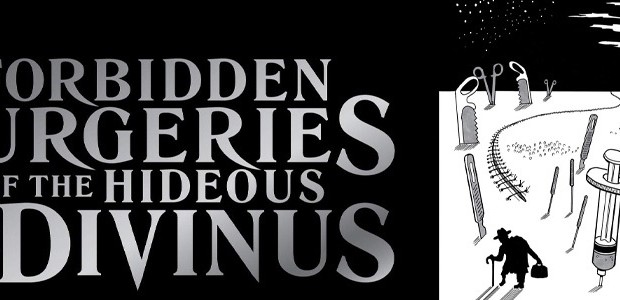

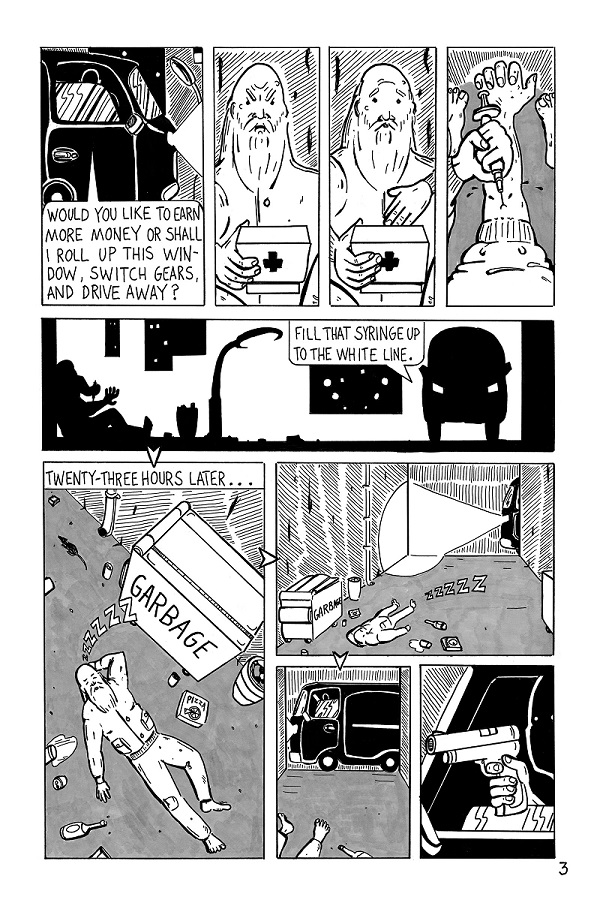
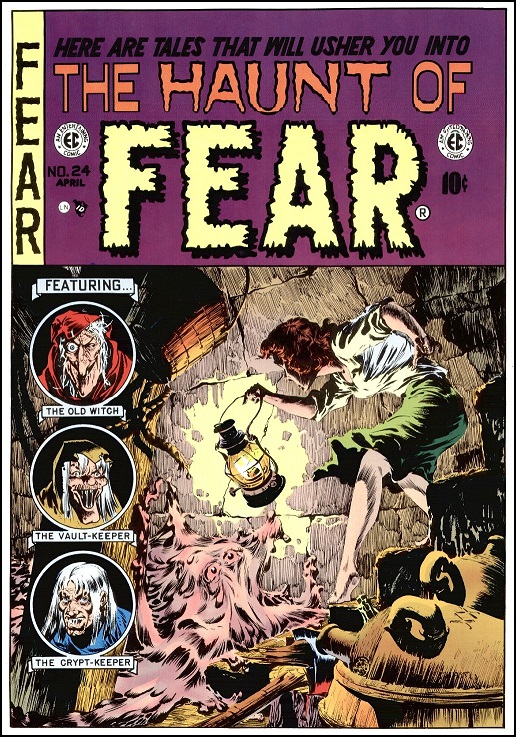

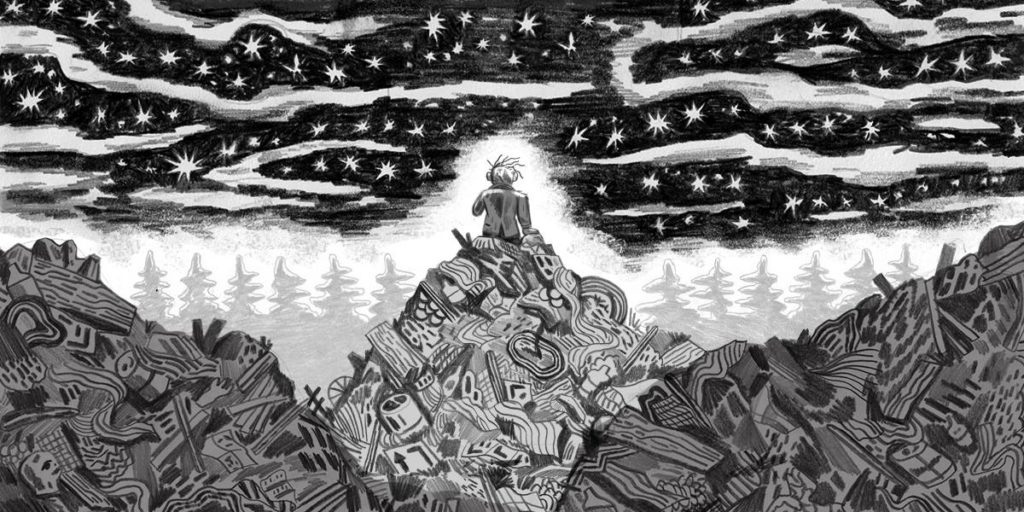

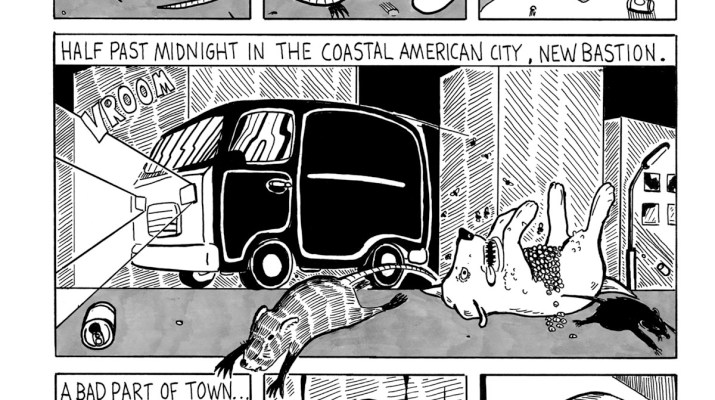
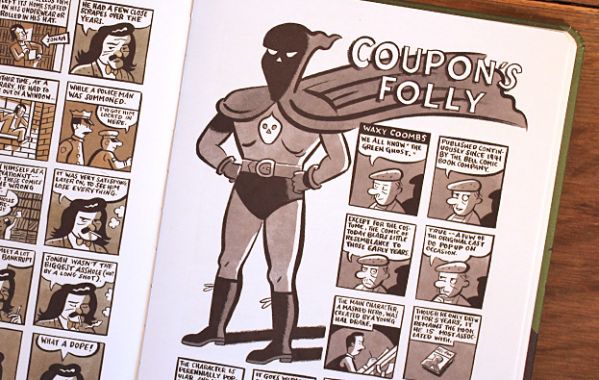

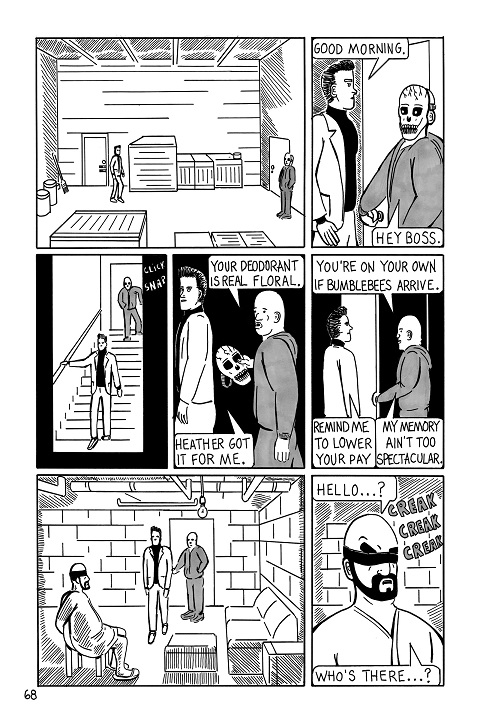
No Comments